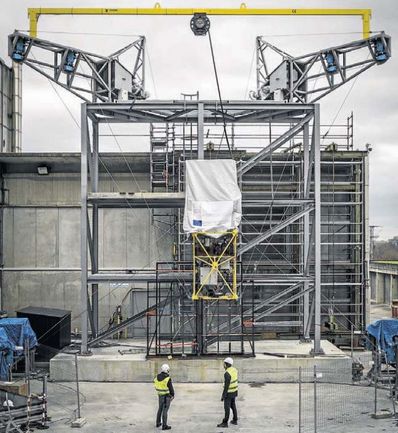Designed for use on façades, it minimises economic costs and ensures increased quality
A group of nine European companies and universities, coordinated by TECNALIA, has developed a robot that is able to move along building façades, assemble them and carry out maintenance work.
It goes by the name of Hephaestus – in honour of the Greek God of Metalwork – and has been under development for the past three years. The first simulations have verified its use on curtain wall façades, which are used in glazed skyscrapers, such as the Iberdrola Tower. Its millimetre precision has also been validated. It is greater than that of a conventional crane, with which much of the work must be performed manually.
The robot is able to move heavy parts as well as perforating hollow parts of the metal, placing the anchoring in its final position and screwing. Another of the main characteristics of Hephaestus is that no other system covers such a field, whereby all turns can be controlled and it can even be adapted to the inclination of the façade.
The tension of the cables is monitored in real time to ensure the securing. Therefore, when detecting that it has gone out of a pre-established range, the system is immediately stopped. All of the machinery is connected to a computer and it can be used manually, although it is totally autonomous.
Our colleagues Julen Astudillo and Mariola Rodríguez, who are responsible for this initiative, highlight the competitive advantages of Hephaestus:
- It increases the safety of personnel working at a height.
- It reduces economic costs.
- It ensures increased quality.
- It carries out maintenance tasks, such as cleaning façades, which now requires the installation of suspended platforms, known as gondolas.

